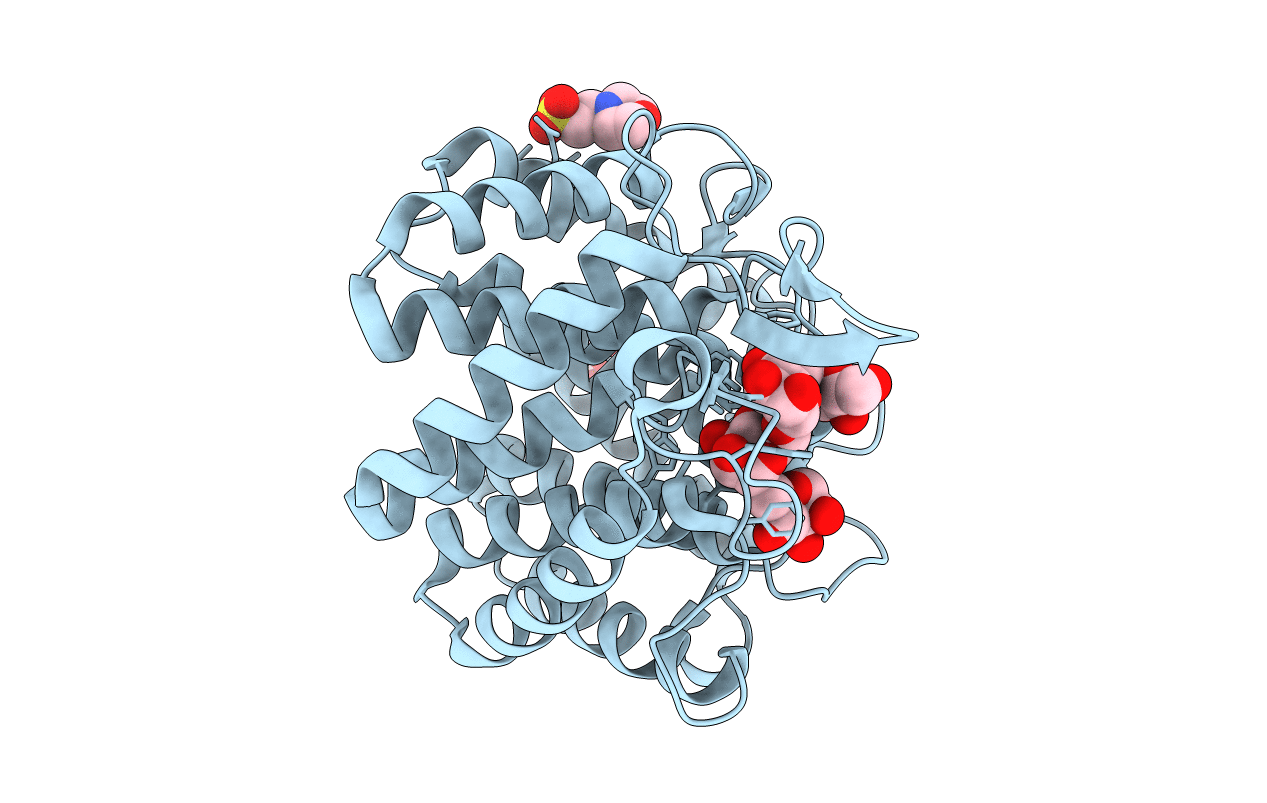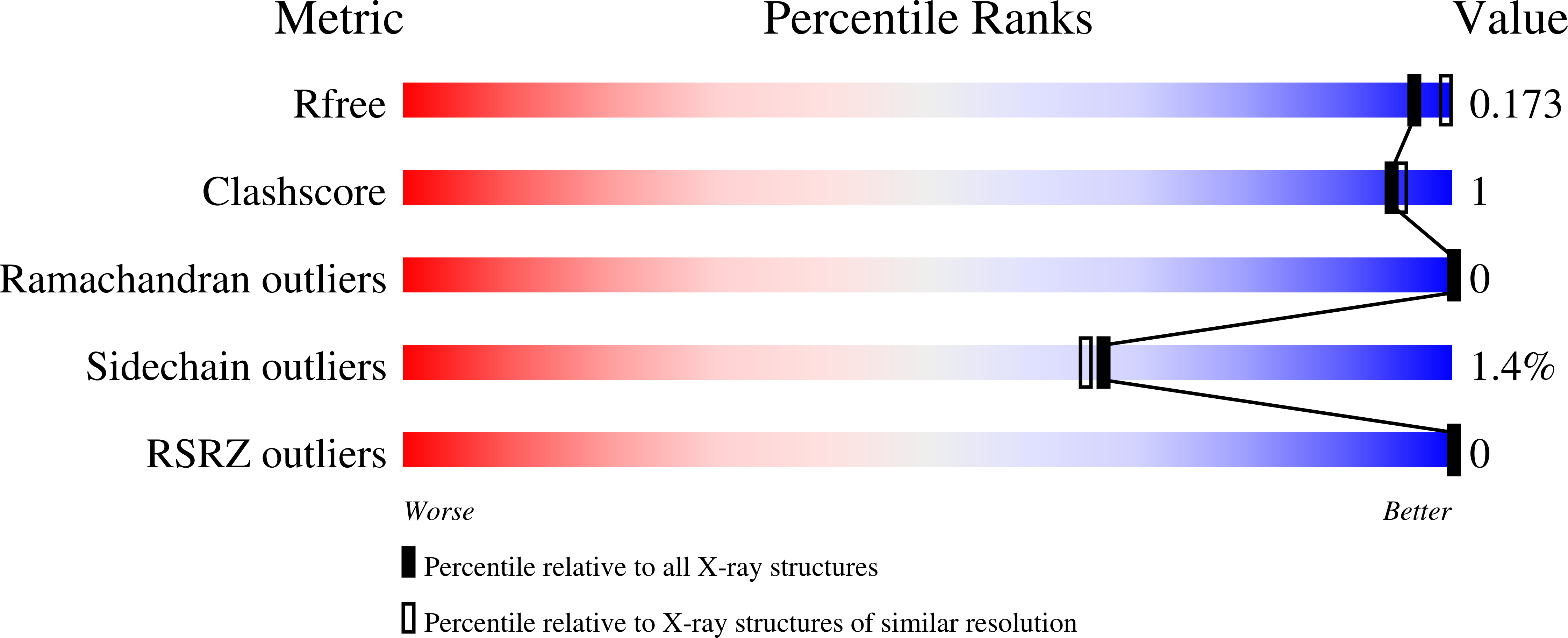
Deposition Date
2019-08-07
Release Date
2020-09-09
Last Version Date
2024-01-24
Entry Detail
PDB ID:
6SHM
Keywords:
Title:
An inactive (D136A and D137A) variant of alpha-1,6-mannanase, GH76A of Salegentibacter sp. HEL1_6 in complex with alpha-1,6-mannotetrose
Biological Source:
Source Organism:
Salegentibacter sp. Hel_I_6 (Taxon ID: 1250278)
Host Organism:
Method Details:
Experimental Method:
Resolution:
1.90 Å
R-Value Free:
0.17
R-Value Work:
0.11
R-Value Observed:
0.12
Space Group:
P 2 21 21


